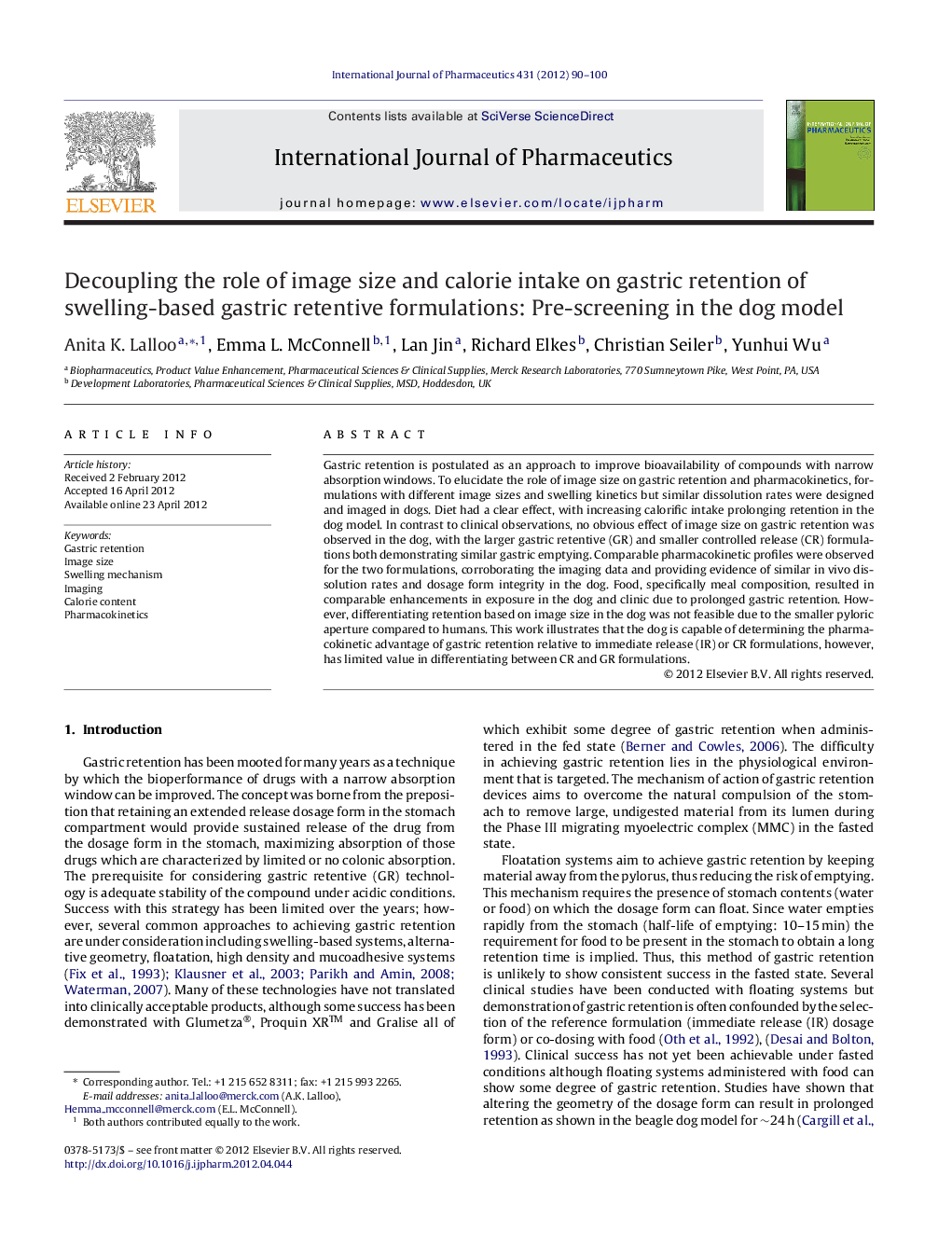| Article ID | Journal | Published Year | Pages | File Type |
|---|---|---|---|---|
| 2502855 | International Journal of Pharmaceutics | 2012 | 11 Pages |
Gastric retention is postulated as an approach to improve bioavailability of compounds with narrow absorption windows. To elucidate the role of image size on gastric retention and pharmacokinetics, formulations with different image sizes and swelling kinetics but similar dissolution rates were designed and imaged in dogs. Diet had a clear effect, with increasing calorific intake prolonging retention in the dog model. In contrast to clinical observations, no obvious effect of image size on gastric retention was observed in the dog, with the larger gastric retentive (GR) and smaller controlled release (CR) formulations both demonstrating similar gastric emptying. Comparable pharmacokinetic profiles were observed for the two formulations, corroborating the imaging data and providing evidence of similar in vivo dissolution rates and dosage form integrity in the dog. Food, specifically meal composition, resulted in comparable enhancements in exposure in the dog and clinic due to prolonged gastric retention. However, differentiating retention based on image size in the dog was not feasible due to the smaller pyloric aperture compared to humans. This work illustrates that the dog is capable of determining the pharmacokinetic advantage of gastric retention relative to immediate release (IR) or CR formulations, however, has limited value in differentiating between CR and GR formulations.
Graphical abstractFigure optionsDownload full-size imageDownload high-quality image (169 K)Download as PowerPoint slide
